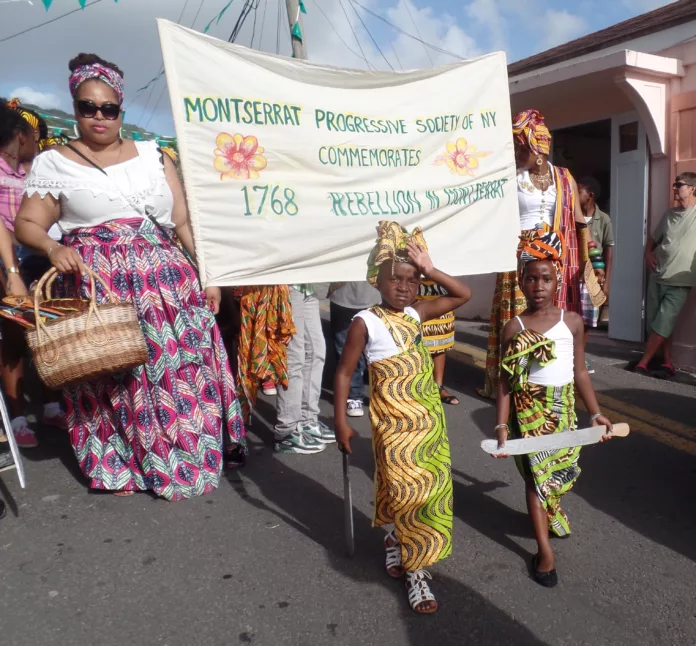

By Barbara Arrindell
“It is pure ignorance,” a gentleman said to me.
“What a Black Caribbean island have to do with a white, European (Irish) holiday? When we goin stop celebrate the colonisers? If anybody from Antigua pick up themself and go fu celebrate St Patrick’s Day in Montserrat, me say dem na understand dem African heritage and culture.”
The Montserrat authorities have confirmed that 2,941 people made their way to the ‘emerald isle’ during the 10-day celebration this year; 1,726 went via the ferry, 778 were flown in and a total of 437 people made their way by boat from Guadeloupe.
There is no denying that there was once a strong Irish presence in Montserrat and that their legacy lingers on in the blood of the people. Many surnames and the names of some villages are Irish but the celebration in Montserrat on March 17 has little to do with honouring the patron saint of Ireland.
It is primarily about honouring a number of Africans who dared to plan a slave revolt on St Patrick’s Day in 1768. Unfortunately, their plot was discovered and nine were punished by death and 30 others imprisoned and later sold and banished from the island.
Many of the early Irish who were brought to these islands came as slaves and indentured servants. As the enslaved Black population grew in the 1660s and a greater white presence was encouraged (they saw that there would be safety in numbers), the Irish were more easily allowed to buy their way out of bondage and servitude and then worked their way up the economic ladder. Eventually many became estate owners and purchased Africans.
At the time when Antigua and Montserrat were claimed by the British in 1632 the tension between the Irish Catholics and British Anglicans was high. Many Irish Catholics took refuge in Montserrat and their numbers grew.
They were joined by Catholics who were running from persecution in Virginia. Even Catholics who tried living in Antigua in those early years found reason to seek refuge in Montserrat as upward mobility was difficult for them in the relatively new Anglican-run colony.

Later in 1649 approximately 1,000 of Cromwell’s Irish political prisoners were exiled to Montserrat. The Irish became, if not the majority, they were a significant enough percentage of the population that they felt relatively safe. They had found a lush green home where they could freely practice their Catholic faith and culture.
Celebrating St Patrick’s Day would have been important to them. It was marked by feasting and in particular drinking. On that day the Irish, and the British who lived peacefully alongside them in Montserrat, and even the French as they too from time to time invaded and conquered the emerald isle, dropped their guard.
It was the perfect day for freedom fighters to execute a revolution. There had been months of planning. The enslaved people who were in government house were instructed to use whatever weapons they could find at the appointed hour. Other enslaved people were instructed to arm themselves with rocks or field tools.
However, asking hundreds of people to keep a secret is a delicate matter. It is said that a woman, some say African, others say Irish, overhead the plan and reported it to the British. The revolution ended before it began.
For the record Montserrat also celebrates another freedom fighter. Local legend says that his name was Cudjoe. In Twi language the name Cudjoe or Kojo means boy child born on a Monday.
This Cudjoe of Montserrat, not to be confused with the Jamaican maroon leader or the Cudjoe sentenced to death in Antigua with Cort/Klas/Takyi, escaped those who enslaved him and encouraged others to run also. When caught, Cudjoe was hung from a silk cotton tree. His head was then severed from his body and left to hang from the tree as a warning to others.
